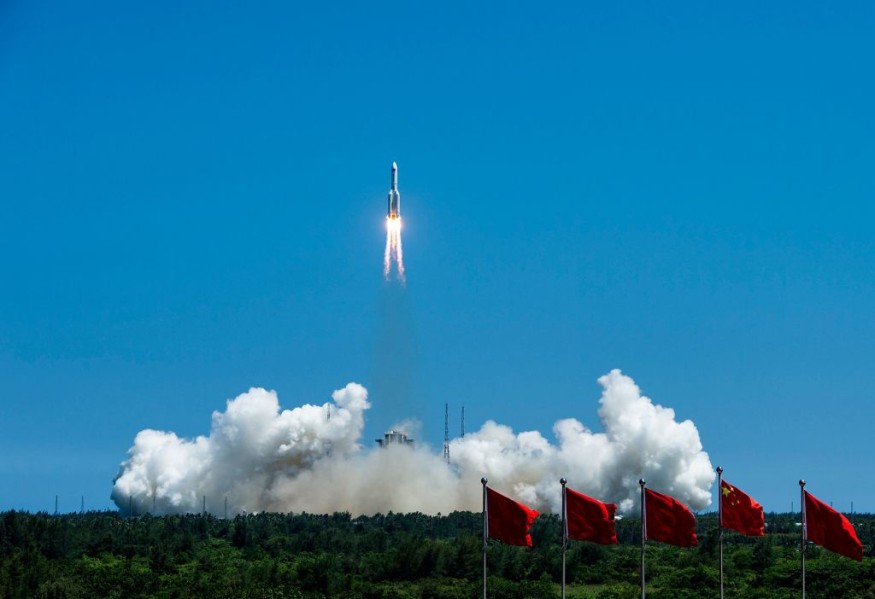
The main phase of a Chinese Long March 5B rocket is due to crash back to Earth aimlessly next week, in a descent that China is actively watching and claims to present no threat.
Chinese Rocket Returning to Earth
The nearly 25-ton rocket venue, which debuted on July 24 to transport the Wentian experimental housing unit to China's unfinished Tiangong command module, is expected to return at the Planet's surface around 7:24 p.m. on July 30.
As per specialists at The Aerospace Corporation's Center for Orbital and Reentry Debris Studies, which is a U.S. government independent scientific institution situated in California, ET, take at least 16 hours, moreover, the probable trash area covers the United States, India, Australia, Africa, Brazil, and Southeast Asia.
While Christopher Newman, a space legislative and strategy senior lecturer at Northumbria University in London claims that plenty of the commercial launch regions will have portions of space artifacts that reach earth in an irregular pattern, and though reaching a global agreement about how to engage with them could be hard considering prevailing global uncertainties.
In the Article VII of the 1967 Outer Space Treaty, to which all significant interstellar travel states, notably China, are signatories, any state that launches an item into orbit is globally accountable for any harm it may do to other signatory when it returns to Earth.
Marlon Sorge, a space junk specialist at The Aerospace Corporation, stated in an internet Q&A. states that the usual guideline is that 20% to 40% of the volume of a big item will approach the earth, however the actual figure relies on the entity's construction.
However, Muelhaupt claims that the chances of this material causing injury to anyone vary from 1 in 1,000 to 1 in 230, and the danger to a specific citizen is far smaller - from 1 in 6 trillion to 1 in 10 trillion.
Whereas NASA Administrator Bill Nelson said in a release following the 2021 Long March 5B midair collision that inter planetary countries should reduce the dangers of atmospheric reentry of celestial objects to loss of life and damage on Earth and promote openness on such activities.
Rocket's Possible Crash on Earth Next Week
Notwithstanding the comparatively modest danger of harm to persons or infrastructure, China's choice to deploy launchers sans the possibility of supervised return has drew harsh criticism from US aerospace specialists.
However, looking at nations' attitudes toward satellite monitoring as well as incident management, and the junk issue in Earth gravity, researchers can see that the global society is not quite committed to try to tackle this dilemma.
If this were to occur, the event would be managed in via an assertions committee or diplomatic efforts, similar to how the caused by faulty Soviet satellite Kosmos 954 crashed into western Canada in 1978, spraying a 370-mile-long route with wreckage from its ruptured inflight nuclear powerplant.
Long March 5B accelerators are extremely dangerous upon unrestrained landing because to their enormous diameter, as considerable chunks of their bulk do not catch fire securely in the stratosphere.
As per a 2019 assessment provided by the US, the globally acceptable fatality risk limit for unauthorized return of rockets is one in 10,000. Recommended Operating Procedures for Mitigating Orbital Debris.
"This is an issue that requires a worldwide response, particularly given that items like launch remnants are significantly more likely to strike towns in the 'Developing World,'" Newman told Live Science. "
Related article : Major Resolution Passed by the UN General Assembly Endorsing the Right to a Safe, Healthy, and Sustainable Environment
© 2026 NatureWorldNews.com All rights reserved. Do not reproduce without permission.





